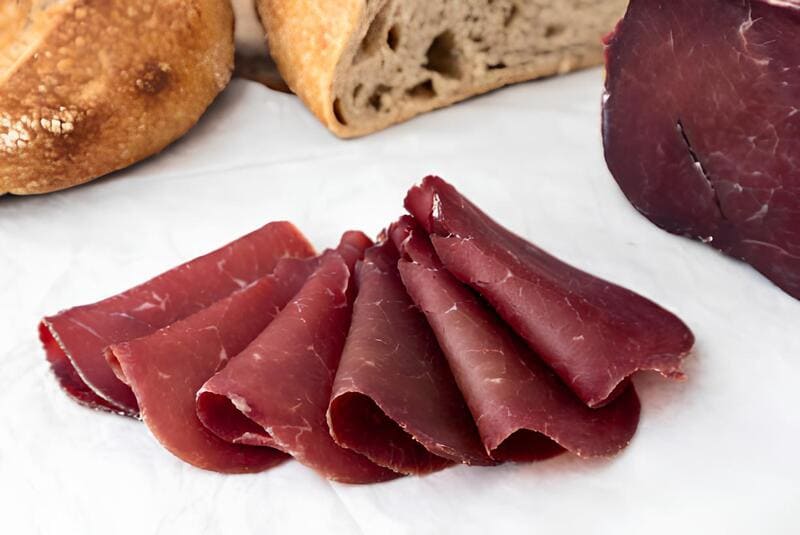
Basturma, also known as Pastirma, is a beloved traditional preserved meat originating from Turkey but widely enjoyed throughout the Middle East, particularly in Egypt. This ancient method of curing and drying meat is celebrated for its bold flavors and unique preparation process that deeply infuses the meat with spices while reducing moisture to enhance preservation.
The flavors of basturma are intensely savory, characterized by a rich combination of garlic, fenugreek, and a high salt content. Known for its deep, tangy taste, basturma is often enjoyed as part of a breakfast platter or as a sandwich filling. This preserved meat stands out for its cultural significance and the meticulous craftsmanship involved in its preparation.
Ingredients
- 1 kg beef (preferably from the veal or a single piece)
- 50 g salt
- 8 cloves of garlic, minced
- 1 tablespoon fenugreek powder
- 2 tablespoons paprika
- 1 tablespoon cumin
- 1 tablespoon black pepper
- 1 teaspoon allspice
- 50 ml water
Preparation
- Trim any excess fat from the beef. Pat it dry with paper towels to remove moisture. Rub the meat thoroughly with salt, making sure every part is covered.
- Place the salted meat between two cutting boards or plates. Apply weight on top to press out excess moisture. Leave it in a cool place for 24 hours.
- After 24 hours, wipe off the salt from the meat. Combine minced garlic, fenugreek powder, paprika, cumin, black pepper, allspice, and water to form a thick spice paste.
- Coat the beef with the spice paste, ensuring it is evenly covered. Wrap the meat in cheesecloth or place it on a wire rack.
- Hang the wrapped beef in a cool, well-ventilated area. Let it cure for at least 2 weeks, or until the meat is dry and firm to the touch.
- Once cured, slice the basturma thinly and serve it as desired.
Did you know?
Basturma is not just enjoyed for its delicious flavor but also for its historical significance. It is often referred to as “the original jerky” due to its ancient preservation methods, dating back to the Ottoman Empire. The term ‘pastirma’ means “being pressed,” which describes the traditional method of pressing the meat to remove moisture.
Interestingly, the fenugreek used in basturma not only adds a distinctive aromatic quality but also has several health benefits, including aiding digestion and reducing inflammation. Nevertheless, it’s important to consume basturma in moderation due to its high sodium content and calorie density, making it less suitable for those with blood pressure issues.
The meticulous preparation process of basturma ensures that the meat is well-preserved without the need for artificial additives, making it a cleaner alternative to commercial luncheon meats. However, pastrami, another meat product often confused with basturma, involves brining and smoking the meat, resulting in different taste and moisture content. While both are delicious in their own right, basturma’s dry cure method creates a unique texture and intense flavor that is cherished by many. Enjoy making and savoring this traditional Egyptian delight!
